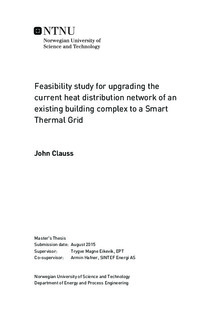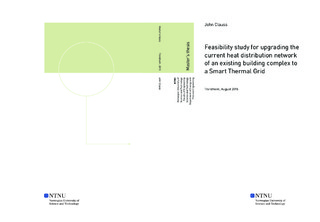| dc.description.abstract | A feasibility study on upgrading an existing heat distribution network to a low-temperature distribution grid has been carried out during this project. The integration of a solar thermal system combined with a borehole thermal energy storage (BTES) for covering the space heating demand of the buildings as well as the application of CO2 heat pumps and water storage tanks for domestic hot water (DHW) production were investigated in order to apply more renewable energy sources.
The energy analysis included several measures, such as modeling the energy demand of the buildings, finding a reasonable number of solar collectors to be installed and dimensioning a ground source heat pump (with the use of CoolPack and Engineering Equation Solver EES) and a geothermal storage (Earth Energy Designer Software EED) as well as CO2 heat pumps (CoolPack/EES).
An economic analysis of all proposed measures has been carried out based on the Net Present Value (NPV) and Net Present Value Quotient (NPVQ). Initial costs, annual costs, annual savings as well as the payback time of the energy systems have been calculated.
It is found that it is not feasible to invest in the proposed energy system for space heating because the payback time (28 years) of the system is longer than the lifetime of the solar thermal system. Furthermore, the solar gain from the solar collectors is not sufficient for recovering the ground temperature of the BTES with solar energy only which is why external sources would be needed for supplying the remaining energy needed to recover the ground temperature.
Results show that an integration of CO2 heat pumps and water storage tanks for DHW production is very promising as the payback time for the investigated system is only 4 years which is why this part should be investigated further. | |

